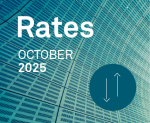
U.S. Treasury electronic trading rebounds
MarketView
The average daily notional volume (ADNV) traded in the U.S. Treasury market in 2025 is set to top $1 trillion for the first time.
New

U.S. corporate bond trading in 2025 is on pace to reach a full-year average of over $50 billion per day for the first time ever, supported by record new issuance activity that has surpassed the previous annual record even before December’s numbers...
New

Are we ready for T+0 settlement?
Greenwich Report
Are we ready for T+0? The go-live date to T+1 advanced settlement of securities came and went and was mostly uneventful in the U.S. While the rest of the globe is preparing for similar settlement times, many capital markets professionals are already...
New

OMS and EMS innovation: Where providers are investing
Greenwich Report
Professionals at buy-side firms are demanding technological advances and new cutting-edge tools to gain an advantage in the front office. Among a long list of new developments, workflow automation and interoperability stand out as top priorities...
Coalition Index for Transaction Banking – 1H25
Greenwich Report
Transaction Banking revenues remained stable in 1H25, with unchanged performance in Cash Management, and a marginal increase in Trade Finance following the recovery in Trade activity.
Coalition Index for Investment Banking – 1H25
Greenwich Report
1H25 Coalition Index Investment Banking revenues rose 13.3% YoY.

The U.S. Treasury market capped off its summer with the lowest average monthly volatility reading since December 2021 and a decline of 27% from last August—a sign that the previous cycle is truly coming to an end.

The credit market’s road to year-end started off with a bang. New issuance hit its highest level since May 2020, which supported an average daily notional volume (ADNV) in the secondary market of $56 billion per day, up 4% year over year.
